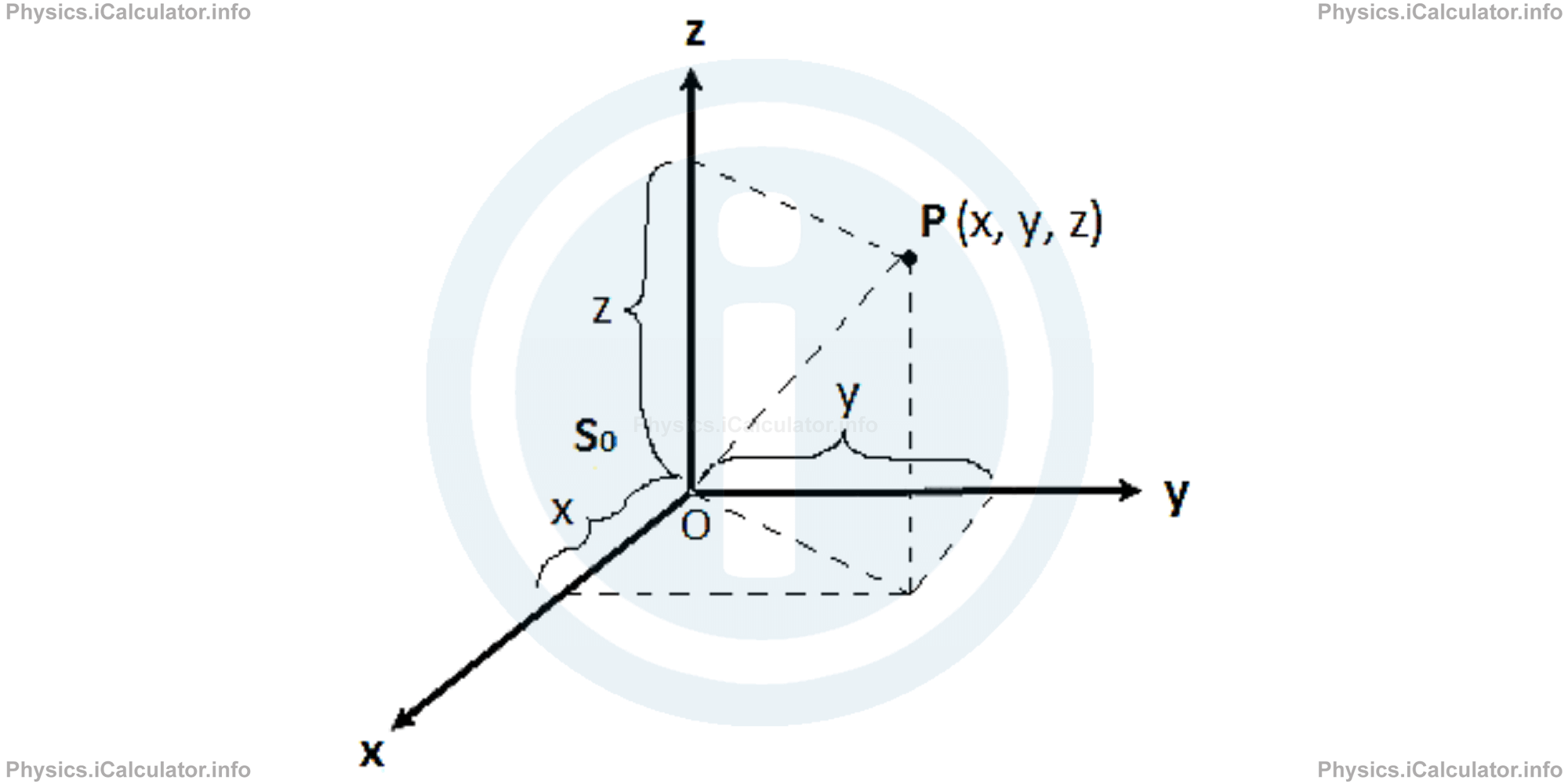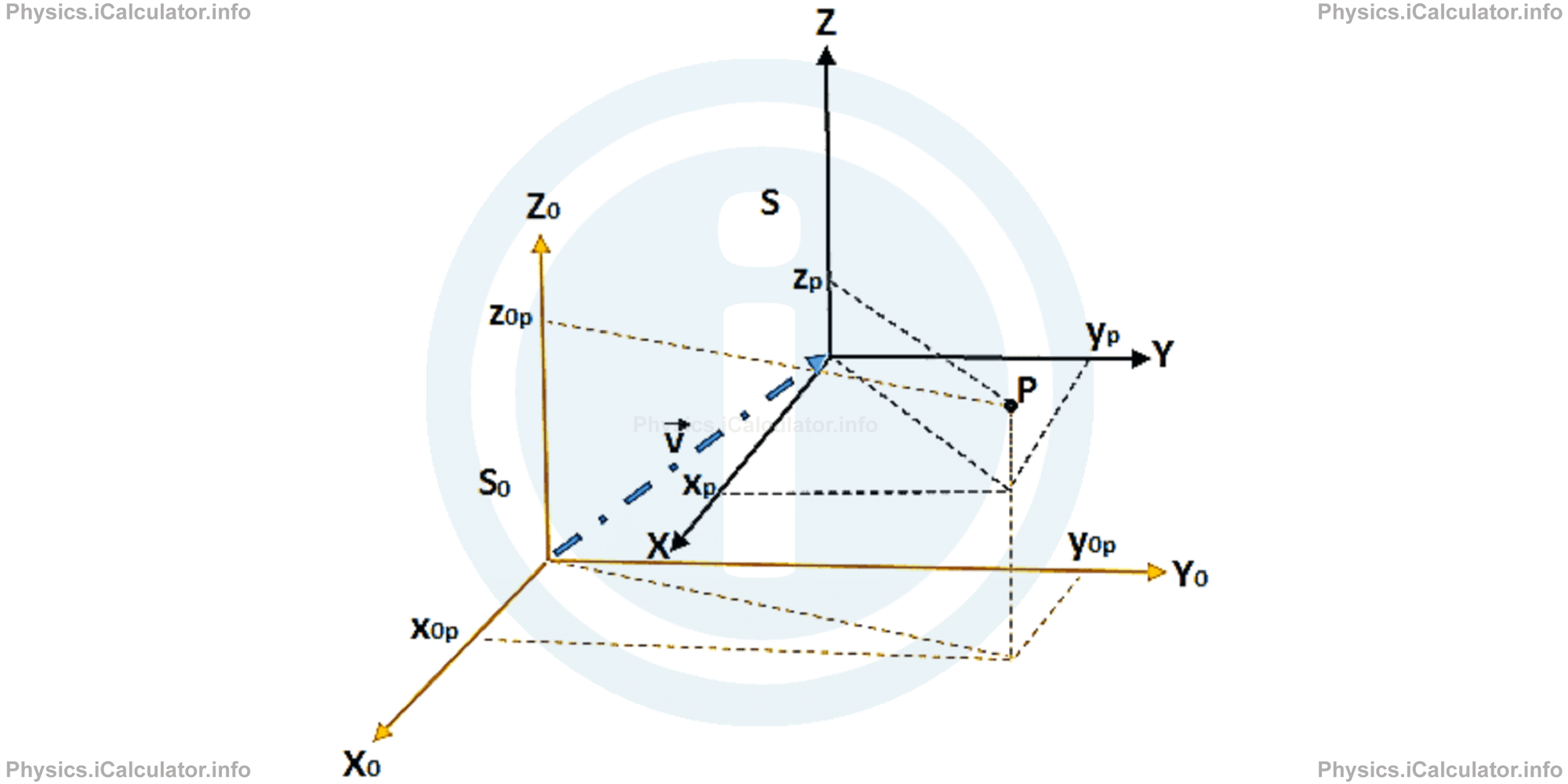Menu
Physics Lesson 18.1.4 - Measuring an Event. The Spacetime Coordinates in the Newtonian System and the Newton's First Law
Please provide a rating, it takes seconds and helps us to keep this resource free for all to use
Welcome to our Physics lesson on Measuring an Event. The Spacetime Coordinates in the Newtonian System and the Newton's First Law, this is the fourth lesson of our suite of physics lessons covering the topic of Relativity. Galilean Transformations. Einstein's Postulates and Newton's Laws, you can find links to the other lessons within this tutorial and access additional physics learning resources below this lesson.
Measuring an Event. The Spacetime Coordinates in the Newtonian System and the Newton's First Law
An event is an occurrence, i.e. something that happens in a certain region of space in a given time. An event is fully described when we know four parameters of it: the three space coordinates (x, y, z) and the time (t). These are known as the spacetime coordinates because in relativity, space and time are entangled with each other.
As explained earlier in this tutorial, a given event may be recorded by any number of observers, each of them being in a different inertial reference frame. In general, different observers will assign different spacetime coordinates to the same event, although an event does not "belong" to any particular inertial reference frame. An event is just something that happens, and anyone in any reference frame may detect it and assign spacetime coordinates to it.
Newton believed in the existence of an absolute space and an absolute time entirely independent from physical processes and from the existence of material objects. In simple words, this belief consisted on the idea that "even if we removed all objects from the universe, the space and time would still remain in it". According to Newton, there exists an eternal and homogenous space (no time instant is privileged over the others). All events occur in this "super vessel" with infinite dimensions and in this time with infinite duration. These events range from the simplest (mechanical processes) to the most complicated, including the life and evolution processes.
The absolute and infinite space of Newton is a three-dimensional space, while his absolute time is one-dimensional. To illustrate this idea, let's choose a whatever point in the absolute space which we call "origin, O" and three perpendicular axes which we call the "Cartesian axes" (x, y, z). Thus, an absolute coordinate system S0 (O, x, y, z) is obtained. Now, whatever point distinct from S0 has the coordinates (x, y, z) as shown in the figure below.

Let's assume a material point (particle) totally isolated in the above three-dimensional space (after assuming to have removed all the other objects in this space). In such condition, the particle has two options: either to stay in the same point of the absolute 3-D space to move in a linear path by changing continuously its coordinates according the rate of the absolute time flow. This is nothing else but the famous "Law of Inertia", postulated initially by Newton. This type of motion is known as "standard motion". The particle in question does not interact with anything else, given that it is isolated in the absolute space. For this reason, it is called a "free particle". We say "a free particle moves in standard mode in the absolute system of space coordinates" and this system is called the "absolute inertial system of reference." As soon as we create the conditions to have a system of reference S which is inertial to the absolute system of reference S0, then every other system that moves in standard mode to this absolute system is inertial as well. Look at the figure.

In the above figure, the point P can be represented though two sets of coordinates: (x0, y0, z0) in the absolute system of reference S0 and (x, y, z) in the inertial system of reference S. Despite the fact that the point P is the same, it has two pairs of coordinates because two inertial systems of reference are being considered, where the inertial system S moves at constant velocity v in respect to the absolute system S0. Therefore, the conditions for the Newton's First Law of Motion are met because this law includes either the objects at rest or those moving at constant velocity (if no force is acting on the object, it either remains at rest or moves at constant velocity).
In the above example, we can consider the situation in two viewpoints. If the absolute system S0 is taken as a system of reference, the point P remains at rest. On the other hand, if we take the system S as a system of reference, the point P is considered in uniform motion, despite it is not moving, because its coordinates change due to the shift of the reference system.
You have reached the end of Physics lesson 18.1.4 Measuring an Event. The Spacetime Coordinates in the Newtonian System and the Newton's First Law. There are 5 lessons in this physics tutorial covering Relativity. Galilean Transformations. Einstein's Postulates and Newton's Laws, you can access all the lessons from this tutorial below.
More Relativity. Galilean Transformations. Einstein's Postulates and Newton's Laws Lessons and Learning Resources
Whats next?
Enjoy the "Measuring an Event. The Spacetime Coordinates in the Newtonian System and the Newton's First Law" physics lesson? People who liked the "Relativity. Galilean Transformations. Einstein's Postulates and Newton's Laws lesson found the following resources useful:
- Measurement Feedback. Helps other - Leave a rating for this measurement (see below)
- Relativity Physics tutorial: Relativity. Galilean Transformations. Einstein's Postulates and Newton's Laws. Read the Relativity. Galilean Transformations. Einstein's Postulates and Newton's Laws physics tutorial and build your physics knowledge of Relativity
- Relativity Revision Notes: Relativity. Galilean Transformations. Einstein's Postulates and Newton's Laws. Print the notes so you can revise the key points covered in the physics tutorial for Relativity. Galilean Transformations. Einstein's Postulates and Newton's Laws
- Relativity Practice Questions: Relativity. Galilean Transformations. Einstein's Postulates and Newton's Laws. Test and improve your knowledge of Relativity. Galilean Transformations. Einstein's Postulates and Newton's Laws with example questins and answers
- Check your calculations for Relativity questions with our excellent Relativity calculators which contain full equations and calculations clearly displayed line by line. See the Relativity Calculators by iCalculator™ below.
- Continuing learning relativity - read our next physics tutorial: Classical Principle of Relativity
Help others Learning Physics just like you
Please provide a rating, it takes seconds and helps us to keep this resource free for all to use
We hope you found this Physics lesson "Relativity. Galilean Transformations. Einstein's Postulates and Newton's Laws" useful. If you did it would be great if you could spare the time to rate this physics lesson (simply click on the number of stars that match your assessment of this physics learning aide) and/or share on social media, this helps us identify popular tutorials and calculators and expand our free learning resources to support our users around the world have free access to expand their knowledge of physics and other disciplines.
Relativity Calculators by iCalculator™
- Energy Calculator In Relativistic Events
- Frequency Calculator During Doppler Effect In Relativistic Events
- Length Calculator In Relativistic Events
- Lorentz Transformation Of Coordinates Calculator
- Lorentz Transformation Of Velocity Calculator
- Mass And Impulse Calculator In Relativistic Events
- Time Calculator In Relativistic Events
- Velocity Calculator In Relativistic Events